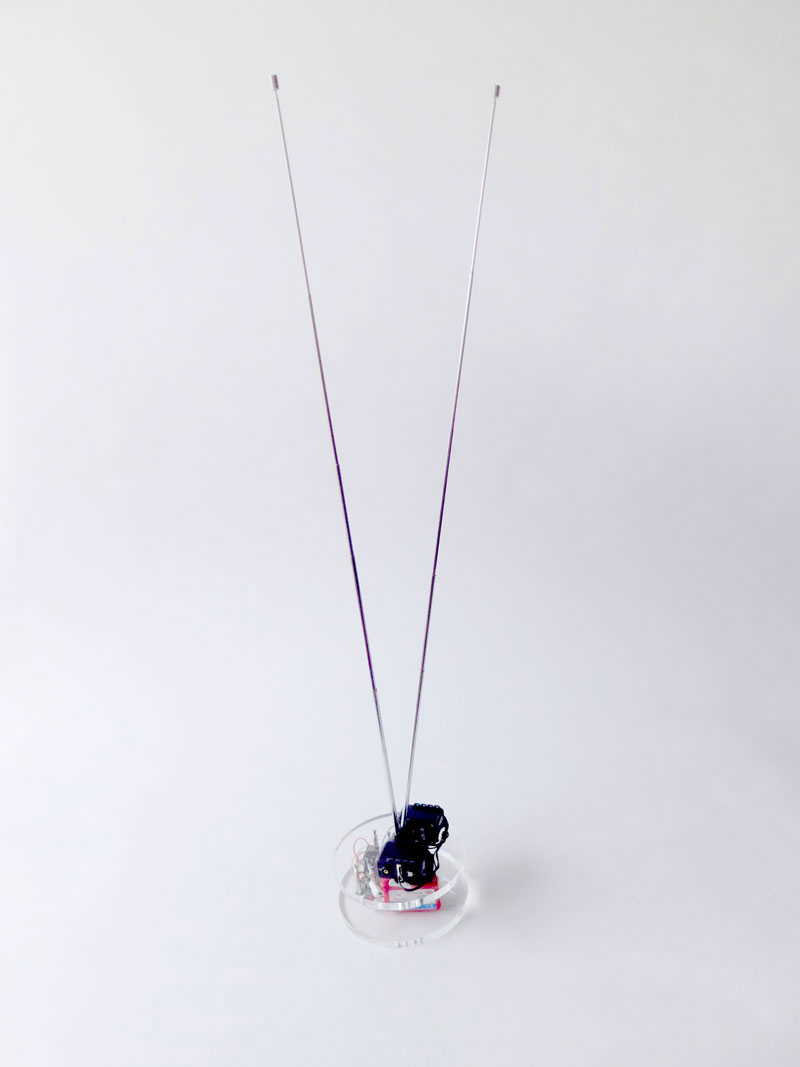Behavioral Objects
Experimenting with, studying, and creating non-figurative robotic art and/or design objects
If we accept the hypothesis that many objects can be robotized, thereby acquiring capacities for movement, action, reaction to their environment, and even autonomy, how can and why should we attribute a personality to non-figurative objects?
How can we attribute them a behavioral or even living character, if not through their “animation,” i.e. their quality of movement, which we must therefore define, study, formalize, put into action and experiment using a practical, reflective and multidisciplinary iterative methodology that combines art, design, engineering sciences (robotics), cognitive sciences, and anthropology?
Snakable
Samuel Bianchini | 2021
How can the content of a signal make the cable that carries it move, as in the case of a video broadcasting device? How would what this video represents then influence, dynamically, the movement of the cable which moves, twists, or struggles—slowly or by jumping—like a snake caught in a trap?Even if communication industries still tend, as do the thinkers in this field, to separate the issues related to content from those concerning the devices that give access to it, that’s definitely not the case here.
Bug Antenna
Raphaëlle Kerbrat, in collaboration with Didier Bouchon | 2018
“Bug Antenna” consists of two telescopic antennas that interact with the room’s WiFi environment. The device reacts to the intensity and number of networks present at the location. Its gestures are similar to those of an insect’s antennae, seeking to probe and interact with its environment.
Find out more
Fauteuil handicapé
Samuel Bianchini, in partnership with Didier Bouchon, Colin Bouvry and Adrien Bonnerot | 2014-2018
Two armchairs are in the same space: a completely empty room or stage. One is an armchair with casters: a decision-maker’s office chair. The other is a wheelchair for the disabled. The office chair moves slowly, alone, at a varying and hesitant pace. It seems to move toward the other, to approach it sometimes and to push it, but it fails nearly each time it tries to do so. It seems coarse and to have a difficult time moving. The second chair, for the disabled, cannot move by itself. It waits to be pushed. Its symbolic power pervades the whole stage and reinforces the uncertainty of disability.
Find out more
Toasters
Olivain Porry | 2018
Apart from the computer, the toaster was historically the first object connected to the Internet, in 1990 (see Romkey and Hackett’s “The Internet Toaster”). “Toasters” is a nod to this event in a set of five toasters freed from their utilitarian condition. Now robots, they hit the ground at the rate of pulses reflecting the temperature they perceive, and they moderate their beats as spectator agitation increases.
Find out more





 photo : LABOFACTORY
photo : LABOFACTORY